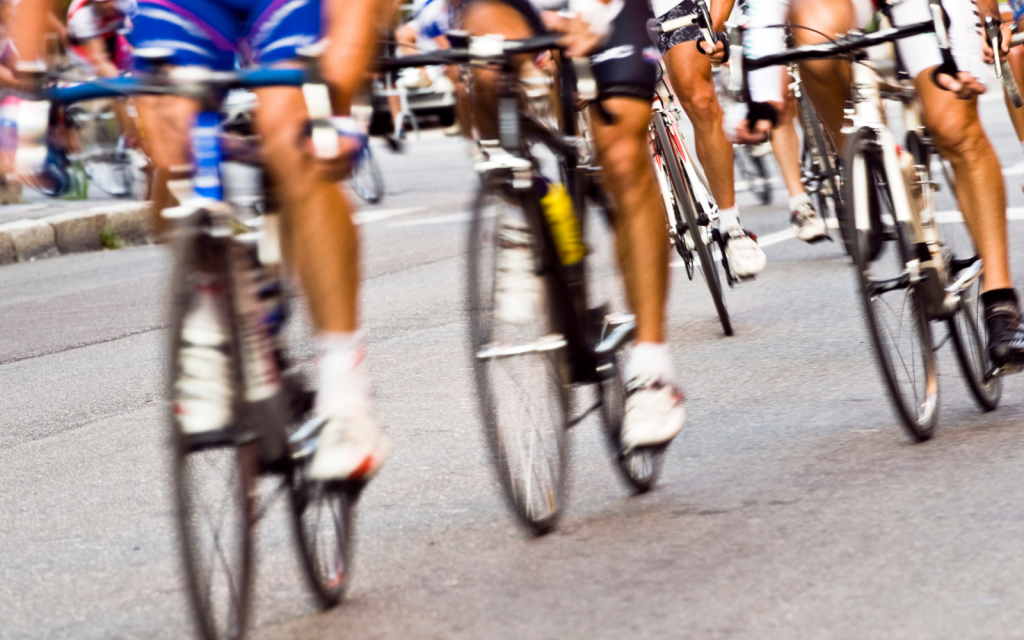On the brutal stage 19 of the Tour de France, eventual winner Tadej Pogačar was two minutes and 23 seconds behind the stage leader with 8km to go.
Within 36 seconds, he was 2:07 behind, having climbed just 200m of the steep Alps mountain road at the end of a 145km ride. He caught leader Matteo Jorgenson inside of the final 2km on the third-last day of this epic sports event to score his fourth stage win.
In what was a climbing masterclass and demonstration of supreme athleticism, Pogačar won last Friday’s stage – before claiming his third Tour de France win on Sunday. This ended in Nice instead of the usual Paris because of this week’s Olympic Games, completing a 3,492km journey.
For the uninitiated, it is hard to decipher just what a phenomenal physical achievement Pogačar’s feat was. But the data allows TV viewers to fully understand how gruelling a physical challenge the 21-day race is; and the extreme athletes who are competing against each other.
Each rider has a GPS device attached to their seat, which feeds real-time data to a mesh wireless network provided by numerous motorbikes and two low-flying fixed-wing airplanes. This is fed into a data analytics platform with a dashboard of relevant data. These are the figures that appear on TV screens as helpful indicators – including how far the yellow jersey rider is behind the stage winner, the distance between groups of riders and other pertinent info.
All of this is made possible by NTT DATA’s real-time analytics platform. The Johannesburg-based firm may be Japanese-owned now, having been acquired in 2010, but its originals are entirely South African – as was the inspiration to do the Tour de France’s data for the race.
Before NTT DATA (then Dimension Data) became the Tour’s technology partner, all of the times before it was being manually collected.
“Speed was being taken off the motorbikes,” teams communicated with their riders using chalkboards, while finish line times were being “done by line of sight,” says Anthony Garstang, the global sponsorship director for Dimension Data from 2015 to 2019.
“Literally, the word that was missing was precision,” Garstang told me. “By placing sensors on the back of the bikes, it started to have precise data for the first time. It made a helluva lot of sense for the Tour, taking large amounts of data and transferring it to the cloud and for broadcast.”
Manually Collected
Before the Tour de France began working with Dimension Data, “information was being manually collected,” says Peter Gray, who has been the on-site project manager for the past decade.
After the dramatic final 10 minutes of Friday’s stage two weeks back, Gray spoke to me from NTT DATA’s mobile data truck, which follows the race’s stages. It’s a high-tech vehicle fitted with banks of screens, that display real-time data.
There is another operation centre in NTT DATA’s Johannesburg Campus, where I watched Friday’s thrilling end to the stage. There, another team control how the data is managed and fed to broadcasters and social media, among others.
Gray was the senior vice president of NTT’s global new ventures and innovation team, before leaving to co-found AI startup TwinLabs.ai a year ago. He still runs NTT’s Tour de France technology program.
With trackers on the bikes, NTT has been able to automate data collection in real-time, providing accurate data like the rider’s positions on the course, their distance to finish, and time gaps from other riders, he says.
“Then we enrich that with weather information, the impact of wind, the gradients of roads and we have detailed metrics and analytics that become interesting to fans,” Gray told me.
There are two kinds of fans, he adds. Casual fans who only watch one race a year, and don’t know (like I didn’t) the extreme athleticism and stamina of Pogačar, climbing up a mountain like it was a flat stretch.
“For deep cycling nerds, we have details like speeds, live gaps for each rider, which allows us to create great content insights,” says Gray, who is also a cycling fan.
He says what has improved drastically, in the decade that NTT DATA has been the Tour’s technology partner, is “position and speed” – which are the main metrics.
Indeed, when I interviewed cycling legend Chris Froome in 2013, a few months before he would win the Tour de France for the first time, he told me he would get his cycling data – mostly from his own power meter fitted to his bike – which was “uploaded onto my MacBook Pro” only at the end of each day.
“On the bus, we have a network and connect to Training Peaks, an online diary of all our training metrics. These are analysed by Tim Kerrison, my personal coach,” he told me.
A decade before he would become the dominant rider himself, while at boarding school in Johannesburg, he would watch Lance Armstrong win the race, before having his medals stripped from him for rampant doping.
King Of The Mountain
As well as being sent to the TV broadcasters, all the riders’ data is published on social media. This team includes respected former business journalist Ben Kelly, who is now an NTT DATA principal specialist for technology-focused content development.
“We’re using this data to provide TV viewers and fans following the race on Race Center with deeper insights into the race,” he told me. “Things like the relative performance of riders, where there were key moments in the race, or even when a Strava KOM gets crushed in the heat of the battle.”
The King of the Mountain (KOM) is a secondary competition in the Tour for the rider who reaches the most mountain summits first. The reward is a white jersey with red polka dots. These rider times have been synced with sports tracking app Strava, so everyday cyclists can match their times against those of the elite athletes.
“For a cycling nerd and data nerd, this is my dream life,” says Gray, who explains the nexus of his two passions with great passion.
“On the business side, this is about automation of business processes. It’s a digital transformation story. That’s an overused term, but if we go back to that journey on the past 10 years – from the analytics to machine learning to building platforms – we’ve been able to introduce new digital services and new experiences for end-users.”
For a chief information officer, this is the equivalent of automating many processes, creating “great data” and integrating it into their digital strategy, he says.
These are the same challenges faced by many businesses, he adds. “So often we have business leaders come to visit and say ‘this is what we are trying to do’ – be it in retail or mining.”
For the Amaury Sports Organisation (ASO), which owns and runs the Tour de France, this is its business.
Revenue streams in sport are driven by eyeballs, says Gray, so the more people who watch, the more sponsorship and broadcasting revenue the organisers can earn.
“For the Tour de France to stay as a global leader in brands and sports products – to compete with Formula 1, rugby and football – it needed to be able to bring its TV product up a level,” Gray told me via a video interview. “And more importantly, all the digital channels” would improve.
Read More: How a surfer in Tahiti became the “defining image” of the Paris Olympics
Indeed, the Tour de France was watched by 3.5 billion global viewers, according to Advertising Week. This is “three times a Super Bowl,” said Oliver Maltby, the executive creative director for Interbrand, according to the publication. “The world’s most played sport may be football/soccer, but the most watched sporting event happens every year in France.”
This data has enabled NTT DATA to evolve the digital capability of how fans can interact with the Tour, Gray adds, allowing for gamification such as the Strava link-up as well as fantasy leagues, which have proved as popular in cycling as other sports.
As Garstang says: “Data helps to tell the story”.
- This column first appeared in Forbes




